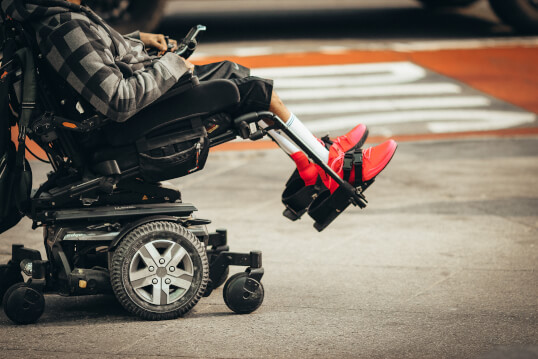

The NDIS recognises that assistive technology and equipment can be an essential part of an overall support plan and help participants achieve their goals, find a greater level of independence and participate in their community.
Some examples of technology and equipment that you can purchase includes things such as mobility aids, ie. wheelchairs & walkers, communication devices, sensory equipment, home modifications, hearing aids, prosthetics and adaptive equipment for daily living.
Read on to learn more about whats included, excluded, and how to access assistive technology and equipment through the NDIS.
Your funding can’t be used for any items that aren’t directly related to your disability or needs. This includes anything that is considered an everyday item. Your funding also can’t be used for anything that is considered to be the responsibility of other government agencies or services. For example, if something would usually be covered under Medicare or the education system.
The NDIS has specific guidelines and criteria for what can and cannot be purchased with NDIS funding. It's always a good idea to consult with a Plan Manager, support coordinator or local area coordinator to ensure that any purchases made with NDIS funding are in line with the participant's goals and needs, and meet the guidelines set by the NDIS.
1. The first step is to identify what your specific needs are.
Speak to your GP, Allied Health Providers or Occupational Therapist to determine what would support you in achieving your goals.
2. Check the NDIS Price guide.
The NDIS price guide outlines the different types of assistive technology and equipment that are available through the NDIS, as well as the funding caps and guidelines for each category. It's important to check the price guide to determine whether the equipment you need is covered by the NDIS, and what the funding limits are.
3. Work with your Representative or Support Coordinator to apply for funding.
Once you have identified the equipment you need and confirmed that it is covered by the NDIS, you will need to apply for funding. You’ll need to gather some supporting documentation from your GP, Allied Health Providers or Occupational Therapist to validate your request.
4. Gather Assessments and quotes.
Before purchasing assistive technology or equipment, participants may need to undergo assessments or obtain quotes to determine their eligibility for funding.
The NDIS has specific guidelines for what types of assessments and quotes are required for different types of equipment, so it's important to consult with your GP, Allied Health Providers or Occupational Therapist or Plan Manager for guidance.
5. Consider the ongoing costs for maintenance and repairs of the equipment.
The ongoing maintenance costs may or may not be covered by the NDIS, depending on the circumstances. The NDIS may provide funding for repairs or maintenance if it is deemed necessary to maintain the effectiveness of the equipment or to ensure the safety of the participant.
Assistive technology and equipment usually comes under the "Consumables" or "Assistive Technology" category of funding in an NDIS participant's plan. The specific category and budget allocated for assistive technology and equipment may vary depending on the participant's individual needs and goals.
This is where good plan management comes in. A Plan Manager will be able to help you apply for the technology under the right category.

A good plan manager will help you understand the NDIS guidelines and ensure all your purchases are aligned with both your needs, goals and the NDIS guidelines. A plan manager will also be able to help you budget and manage your funding so you have the necessary funding available for your purchase. They can help you source quotes, arrange assessments and find the right supplier for your purchase.
All Disability Plan Management can help you navigate all of this, and get the most out of your funding. Get in touch with us to learn more about how we can help you get the technology you need with your funding.